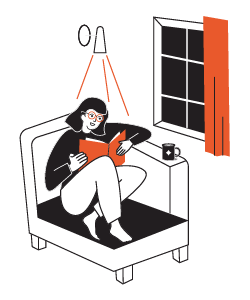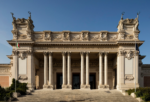Paolo Scheggi / Lucy Skaer
.jpg)
La galleria Cortesi Contemporary è lieta di annunciare la mostra Scheggi – Skaer, dedicata a Paolo Scheggi (Settignano-Firenze 1940 – Roma, 1971) e Lucy Skaer (Glasgow, 1975).
Comunicato stampa
La galleria Cortesi Contemporary è lieta di annunciare la mostra Scheggi - Skaer, dedicata a Paolo Scheggi (Settignano-Firenze 1940 - Roma, 1971) e Lucy Skaer (Glasgow, 1975).
Questo percorso espositivo, curato e concepito per la galleria di Lugano da Eva Fabbris, mette a confronto la ricerca storica di Paolo Scheggi con l'indagine più recente dell'artista Lucy Skaer. In un gioco di pieni e di vuoti, i due artisti, appartenenti a generazioni diverse, dialogano in uno scambio vitale, narrativo ed evocativo.
L’accostamento delle pratiche dei due artisti rivela dei punti di interesse in comune, e delle sorprendenti forme di continuità tematica: Scheggi e Skaer nelle loro opere esprimono una comune tensione verso le forme geometriche, intese come modelli astratti, come filtri tra il visibile e l’invisibile, come unità capaci di determinare una specifica relazione con lo spazio.
Paolo Scheggi, Intersuperficie curva bianca, 1965, Acrylic on three canvases, 70 x 100 cm © Paolo Scheggi/SIAE.
In mostra saranno visibili alcuni dei lavori più conosciuti di Paolo Scheggi, quali le Intersuperfici monocrome, formate da tre tele sovrapposte e solcate da aperture ovoidali o circolari, e le Strutture modulari o Inter-ena-cubi, opere realizzate con l'uso di cartoni monocromi fustellati. Grazie alla collaborazione con Franca e Cosima Scheggi, verranno inoltre esposte la maquette della Intercamera Plastica del 1966, progetto del noto ambiente realizzato dall'artista quale estensione dell'opera nello spazio, e l'Interfiore del 1968, composto da elementi circolari, pendenti dal soffitto, dipinti con pittura fluorescente e illuminati con lampade di Wood.
Lucy Skaer presenterà alcune opere recenti, insieme a una nuova produzione. Inoltre, ha ideato una sottile alterazione dello spazio espositivo: gli elementi architettonici della galleria diventano così parte integrante del dialogo tra le sue opere e quelle di Scheggi.
Le preziose sculture in diversi materiali dell’artista scozzese rendono visibile allo spettatore una sorta di dubbio rispetto alla geometria: le sagome regolari presentano volontarie irregolarità, che mettono in questione l’idea di forma pura. Una sua grande opera su carta, l’unica che presenta una figura, evoca la presenza del corpo umano, così centrale nelle opere performative del tardo Scheggi.
Lucy Skaer, Untitled, 2009, watercolor on paper and aluminum, installation view, Kunsthalle, Basel. Photo Serge Hasenböhler, courtesy of Lucy Skaer, Murray Guy and Peter Freeman.
Cortesi Contemporary is pleased to announce the opening of Scheggi - Skaer, a show dedicated to Paolo Scheggi (Settignano, Florence 1940 - Rome, 1971) and Lucy Skaer (Glasgow, 1975).
This exhibition, curated and conceived for the Lugano gallery by Eva Fabbris, juxtaposes the oeuvre of Paolo Scheggi with the more recent practice of artist Lucy Skaer. In a dance of positive and negative space, these two artists from different generations forge a lively, narrative and evocative dialogue with each other.
The juxtaposition of the two artists’ work reveals common interests and a surprising continuity of themes: Scheggi and Skaer’s pieces reveal a similar attraction to geometric shapes, seen as abstract models, filters between the visible and invisible, units that help define a specific relationship to space.
The show will include some of the best-known works by Paolo Scheggi, like his monochrome Intersuperfici, made of three overlapping canvases pierced by round or oval holes, and his Strutture modulari or Inter-ena-cubi, made from monochome die-cut cardboard. Thanks to the collaboration of Franca and Cosima Scheggi, it will also feature the models for his Intercamera Plastica from 1966, a design for the famous installation that the artist created as an extension of the work into space, and Interfiore from 1968, composed of circular forms hanging from the ceiling, painted with fluorescent pigment, and illuminated with black lights.
Lucy Skaer will be presenting recent works along with a new project. Moreover, she has come up with a concept for subtly altering the exhibition space: the architectural features of the gallery thus become an integral part of the dialogue between her works and Scheggi’s.
The Scottish artist’s exquisite sculptures, made from a range of materials, present the viewer with a sort of doubtful geometry: the regular shapes have intentional irregularities that call into question the idea of pure form. A large work on paper, the only figurative one, evokes the presence of the human body, which was so central to the performance work of Scheggi’s late career.



